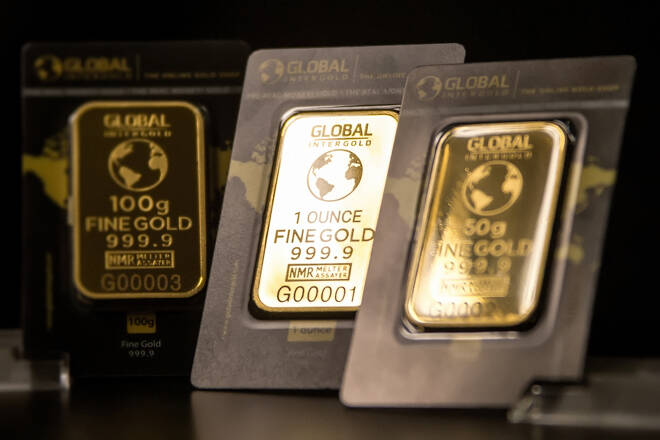Advertisement
Advertisement
Gold Price Forecast XAU/USD – Profit-Taking, Position-Squaring Likely to Generate Near-Term Pressure
By:
Gold could be pressured this week by investors making adjustments to their portfolios to account for the possibility of more Fed rate hikes.
Gold futures fell nearly 3% on Friday to their lowest level since Jan. 6 after hotter-than-expected U.S. jobs data raised fears that the Federal Reserve could keep hiking interest rates.
On Friday, April Comex gold futures settled at $1876.60, down $54.20 or -2.89%. The SPDR Gold Shares ETF (GLD) finished at $173.43, down $4.47 or -2.51%. The sell-off was part of the biggest weekly decline since early October, with prices having fallen nearly $100 in two sessions.
Strong US Jobs Data Drives Yields, Dollar Higher, Pressuring Gold Prices
U.S. employment growth accelerated sharply in January, with 517,000 positions added, almost double the gain in December. The unemployment rate hit more than a 53-1/2-year low of 3.4%, pointing to a persistently tight labor market.
The jump in the 10-year Treasury note yield drove the U.S. Dollar into a three-week high, making the non-yielding, dollar-denominated commodity a less-attractive investment.
The numbers also raised concerns that the Fed might have to remain a little bit more aggressive going forward.
At the end of Friday’s session, traders’ bets for a 25-basis-point rate hike at the Fed’s March meeting ticked up, while the U.S. central bank’s benchmark overnight interest rate was seen peaking at 5.03% by June compared to 4.88% a day earlier.
Russians Bought Record Number of Gold Bars in 2022, Data Shows
Russians bought an all-time record number of gold bars in 2022, finance ministry data showed on Friday, as tax cuts on precious metals encouraged people to stock up on bullion as a safe asset.
According to the data, Russians bought over 50 tonnes of gold bars in 2022, ten times more than the year before. The most sought after were 1 kilogram bars which accounted for about 60% of those sold.
“Gold was a good protective financial solution last year,” said Yevgeny Beresnev from VTB’s investment products department.
“Customers shifted funds into this instrument in order to diversify their assets and make a profit when long-term planning.”
Central Banks Bought the Most Gold Since 1967 Last Year, WGC Says
Central banks added a whopping 1,136 tonnes of gold worth some $70 billion to their stockpiles in 2022, by far the most of any year since 1967, the World Gold Council (WGC) said on Tuesday.
The data underline a shift in attitudes to gold since the 1990s and 2000s, when central banks, particularly those in Western Europe that own a lot of bullion, sold hundreds of tonnes a year.
“This is a continuation of a trend,” said World Gold Council analyst Krishan Gopaul. “You can see those drivers feeding into what happened last year. You had on the geopolitical front and the macroeconomic front a lot of uncertainty and volatility,” he said.
Weekly Outlook
Sellers could continue to dominate the trade this week as investors make adjustments to their portfolios to account for the possibility of Fed rate hikes extending into at least June.
I don’t expect the selling to last too long because the Fed and other central banks are approaching the end of their interest rate hiking campaigns. But time is money so investors have to rebalance their portfolios.
At the same time, the news that central banks were buyers last year is long-term bullish because it creates a floor or major support for gold. But we’re going to have to continue to monitor the situation since they could start to sell some of their positions if the central banks start cutting rates later in the year.
For a look at all of today’s economic events, check out our economic calendar.
About the Author
James Hyerczykauthor
James Hyerczyk is a U.S. based seasoned technical analyst and educator with over 40 years of experience in market analysis and trading, specializing in chart patterns and price movement. He is the author of two books on technical analysis and has a background in both futures and stock markets.
Latest news and analysis
Advertisement
